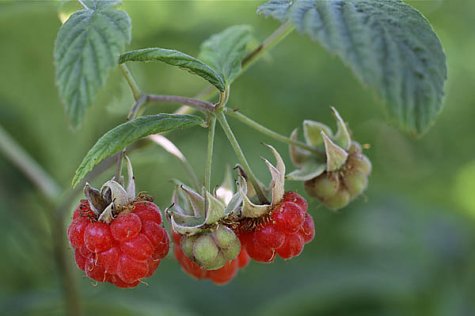Often cause to talk about wild berries
Photo: Arne Ader
Translation: Liis
Raspberry
Raspberry Harilik vaarikas Rubus idaeus
The raspberry is a common plant on the verges of dry and fresh forests, along forest boundary clearings and at roadsides. Of course also on cleared forest areas until the young forest has outgrown the raspberry plants – they need much light.
Because of the woody stems raspberries are classified as shrubs, regardless of having only two years of life – in the first year the plant only grows leaves and the carriers of next year’s harvest can be clearly seen. Raspberry leaves are greener on the top, lighter and sparsely hairy on the underside, the stems green. Next spring the lignified stems will have flowers and in July, fruits. After the ripening of the fruits the stem dies but from the rhizome already a new stem has grown. So the life cycle of raspberry plants runs.
The raspberry fruits ripen unevenly, so we can pick several harvests from one stem. Botanically the raspberry fruits are not berries but aggregates of drupes, meaning that the „berry“ consists of tiny grainlike drupes (stone fruits) of which there can be several tens in one fruit.
Sometimes raspberries are “worm-eaten” and a plump worm stares at you from the fruit. We have not to do with a worm but with an insect larva – raspberries are damaged by the larva of the raspberry beetle (Byturus tomentosus). In August they go into the ground to pupate; in the autumn raspberry beetles appear that overwinter in the soil. In June next year the beetles lay their eggs on the raspberry plants: so the life cycle of the raspberry beetles goes.
In dry and sun-exposed areas the drought managed to damage the raspberries but in more humid and a little shadowed habitats the delicious and aromatic fruits can be enjoyed.









